Of all the big reveals that fashion week has to offer, one of the most hotly anticipated can’t be modelled, worn or bought. Rather, it’s the theatrical sets for Prada’s seasonal shows. Staged inside the Prada Foundation, these backdrops make as much of an impression as the collections themselves. Some of the brand’s most ambitious projects have transformed the space into an abstract paper doll’s house (spring/summer 2023), a metal-clad cage (spring/summer 2024), a supersized office with plants and a trickling stream (autumn/winter 2024) and an intricate scaffolding system (autumn/winter 2025). Talk about thinking outside the box.
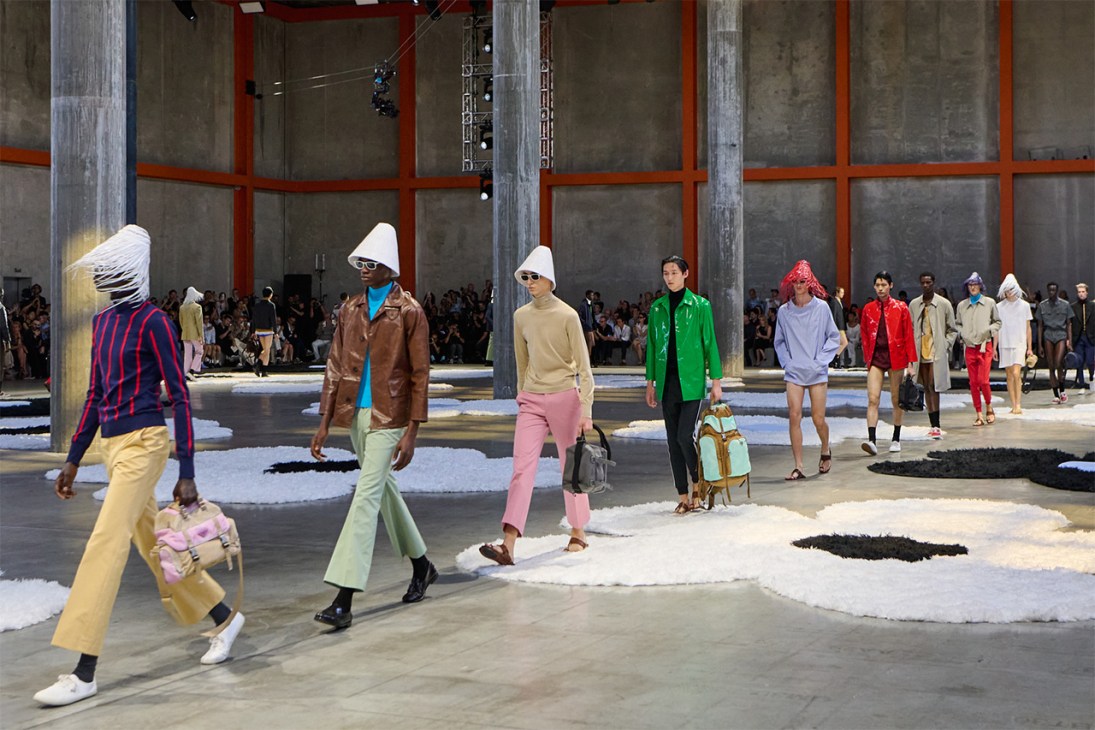
The team behind the seasonal transformations is Rotterdam-based architecture practice OMA and its research and design studio, AMO which were founded by by Rem Koolhaas. The fashion world’s go-to for masterminding original runway concepts (it also counts Loewe, Christian Dior and Louis Vuitton as clients), OMA/AMO has been working with Prada on its runway shows since 2004, granting its team a regular audience with co-creative directors Miuccia Prada and Raf Simons.
“The kick-off meeting is a conversation in which we exchange ideas, and Miuccia Prada and Raf Simons describe their ambitions for the upcoming show,” Giulio Margheri, an associate architect at the firm, tells Monocle, granting a rare insight into the Prada process. “The input typically focuses on atmosphere, feelings and directions. It’s more theoretical than visual, though they might sometimes bring specific images, references or fascinations.” From there, Koolhaas, Margheri and their teams translate their input into ideas for the space. “We propose concepts from various sources, which we gradually refine,” he adds. “Both offices like to challenge what can be done. There is restless research in doing new things, exploring and being curious. The functional requirements of the space are always very similar but the process and designs are always different.”
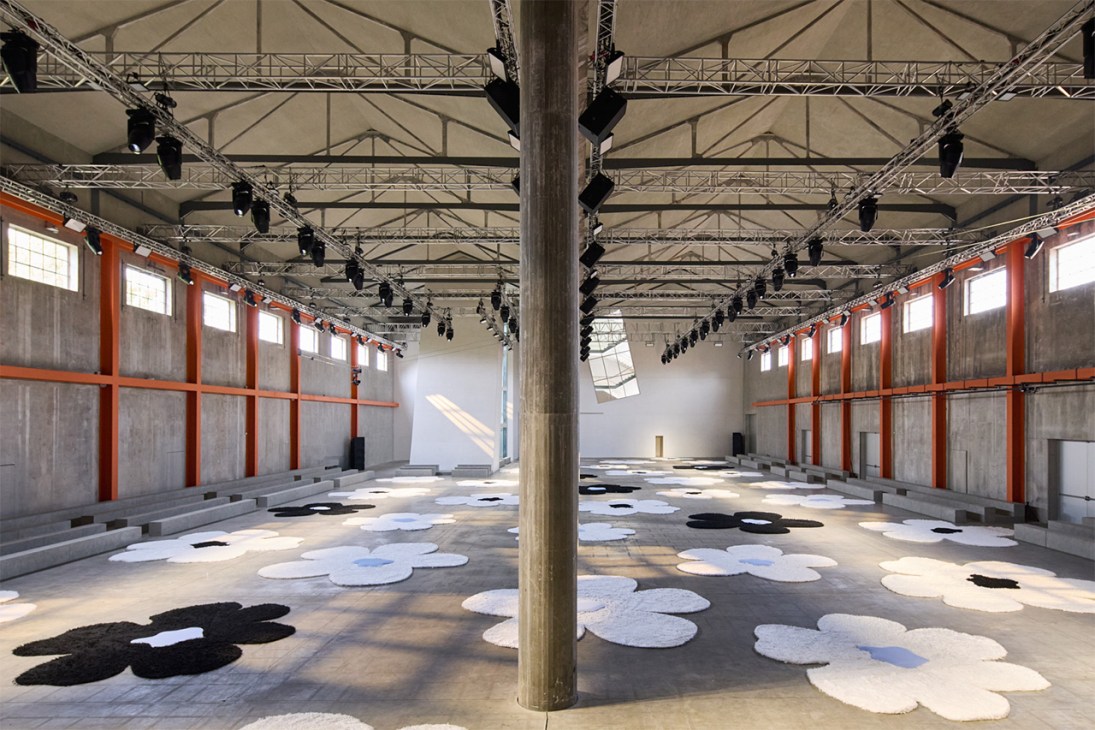
At the label’s most recent spring/summer 2026 menswear show, the runway was devoid of imposing structures and instead featured an open-plan design, complete with retro daisy-shaped shag-pile carpets. “We were trying to do something powerful with minimal intervention,” says Margheri. “This season was about avoiding overly large or complex scenography. Modesty was a key theme throughout the process.”
The set proved to be a blank canvas of sorts for a collection that was equally pared back. “It’s a powerful way to experience space,” he adds. “The show was one of the first times that guests saw the room in its rawness. It was very impactful in its simplicity.”
While forging a situational dialogue, there’s no hard-and-fast rule about the sets speaking directly to the collection, says Margheri, citing the office-cum-meandering creek of autumn/winter 2024 as an example. “The raised floor featured a natural landscape and office chairs. People made assumptions about what the show meant or what it was supposed to be. Sometimes there is an instant reaction to what a set represents. But we don’t see this as something that people need to question or answer.”
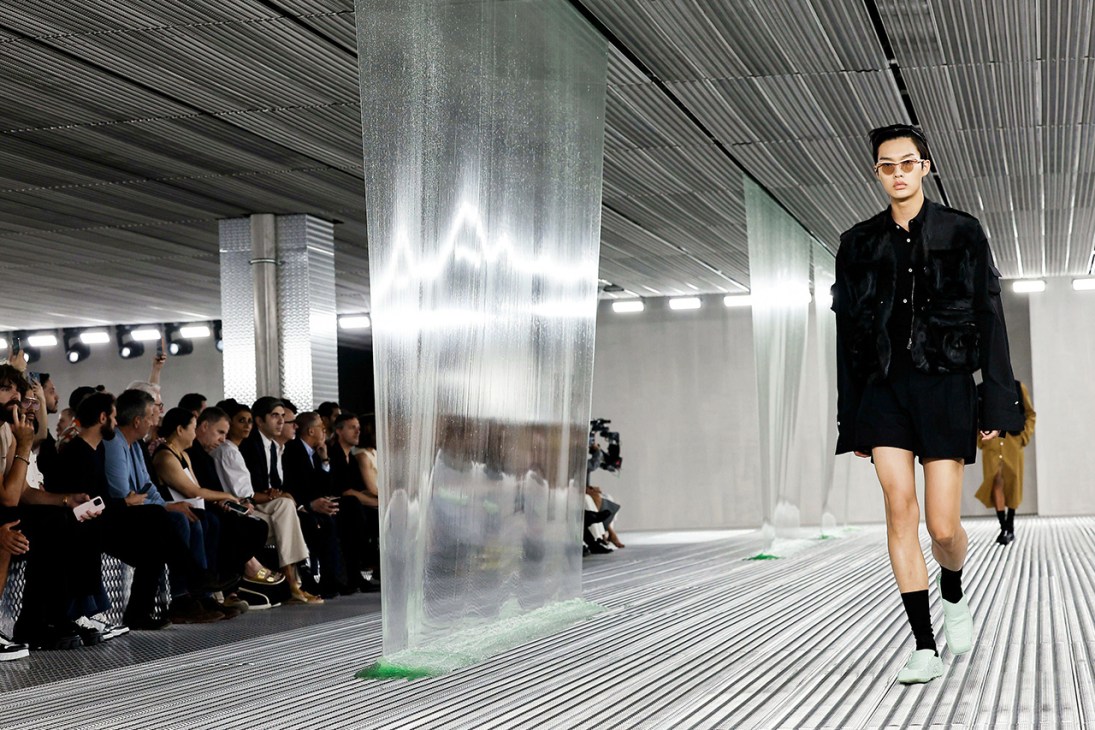
Working within the fashion-week calendar’s short timelines makes a successful set installation all the more sweet. Among Margheri and his team’s highlights? Dressing the space in corrugated metal panels, with slime descending from overhead panels. “For that show, we worked with materials not typically used in architecture but scaled them up to architectural dimensions,” he says. “It was one of the first – or maybe the only – times that the set was not fully tested before the show.” In the end, it all worked out, creating yet another powerful memory for the brand’s show guests. “It’s very rewarding to be able to get these things built in such a short time,” says Margheri. “Someone once described this process as a gym for architects – there’s always a need to come up with something new, find new materials and solutions, while working within similar parameters. It forces you to reinvent everything but the core programme itself.”
A decade after launching his Tokyo-based brand, Auralee, Kobe-born designer Ryota Iwai is hitting his stride. Auralee has earned a reputation for its masterful use of colour, meticulous tailoring and Japan-made quality. This is elegant, modern luxury – all made to Iwai’s exacting specifications – that is a delight to touch and wear. It’s an alluring mix of Tokyo edge with wearable sophistication, crafted by factories that have been working with Iwai on his journey from the beginning. With stockists around the world and a flagship in the Japanese capital, the label is now attracting global attention. Auralee is also a fixture on the official Paris Fashion Week calendar. Look out for the label’s runway show at the Musée des Archives Nationales at 17.00 London time on 24 June.
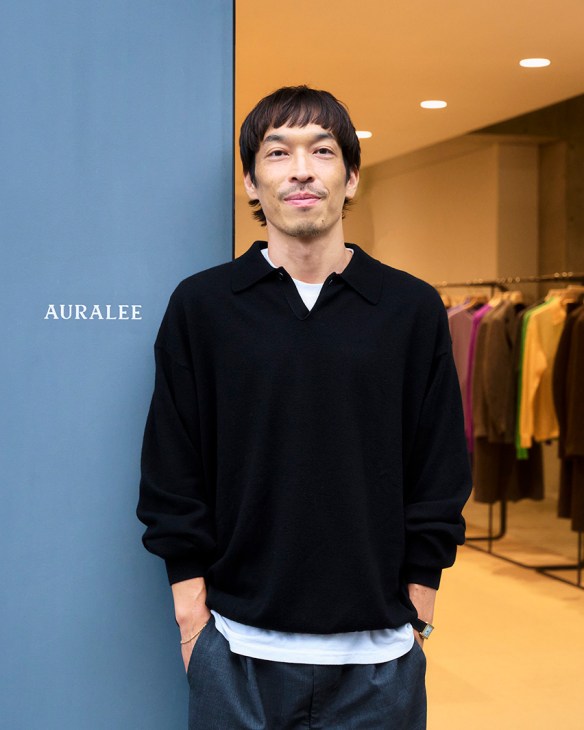
Tell us about the new collection.
There is a variety of leather items (including suede and smooth leather), premium wool, and cashmere, along with garment-dyed and garment-washed pieces. The brand’s signature sophisticated heather tones and mustard yellows are part of a colour palette that shifts from the heavy tones of winter to the light, bright hues of summer.
The collection draws its inspiration from the changing of the seasons. Spring brings a mix of cold and warm days. As it gradually gets warmer, it’s always a challenge in the morning to decide on a look, sometimes resulting in outfits that feel like a slightly odd blend of winter and summer. These unexpected pairings can add charm to an elegant look. It is these fleeting moments that inspire the collection.
Any key pieces that define the collection?
Cashmere suits and shirts, hand-sewn coats, silk organdy skirts and dresses.
How does it feel to be returning to Paris on the established calendar?
I always feel nervous and a bit anxious. But having worked on the show for six months, I’m excited about how it will come together.
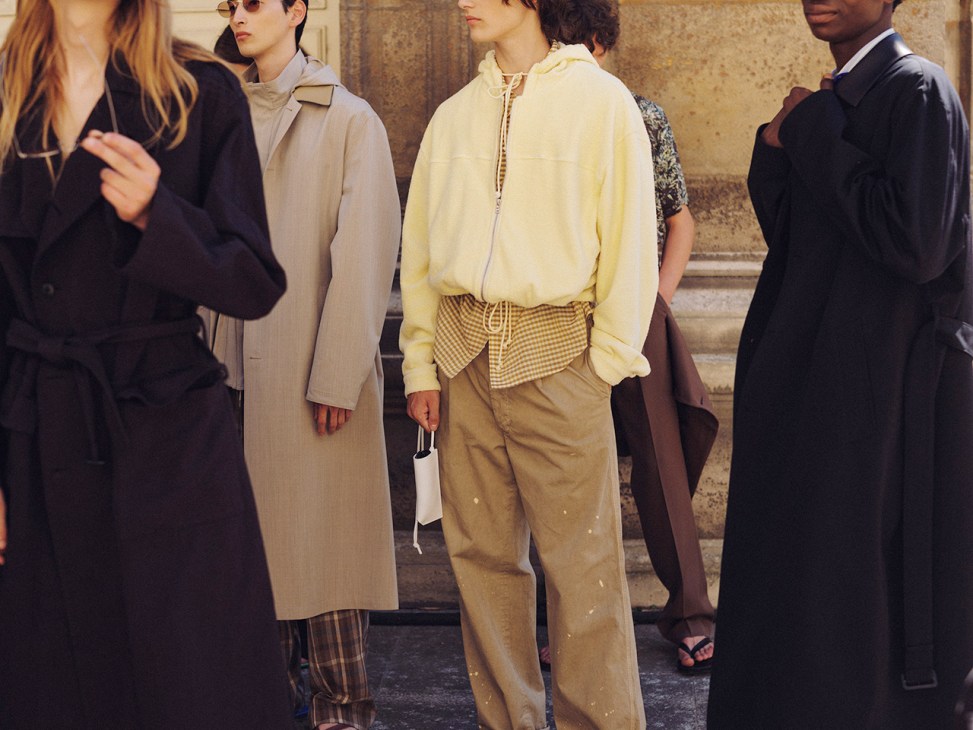
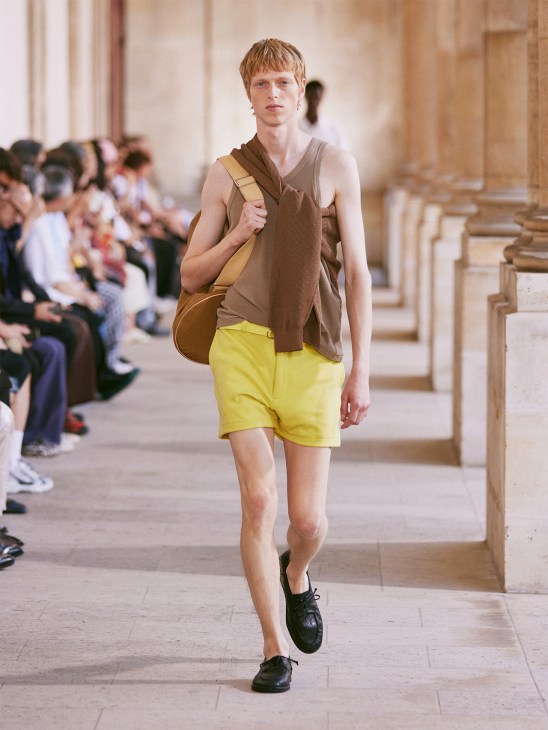
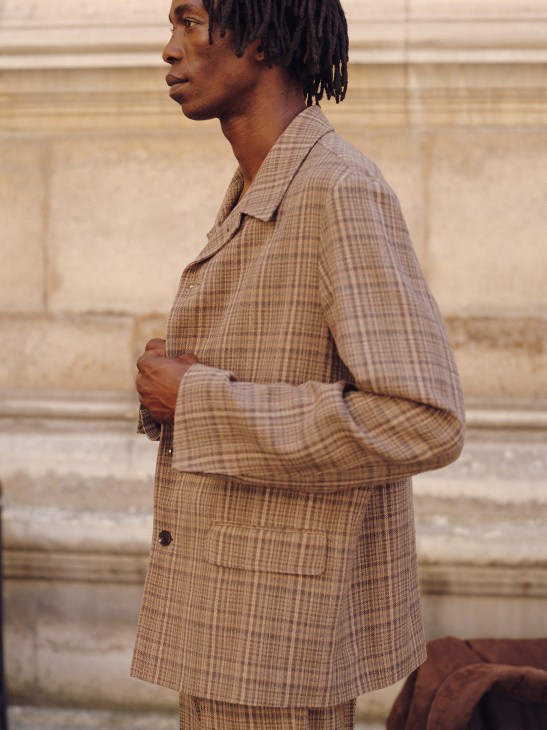
Is Paris still the best place for you to show?
It is the centre of fashion. Paris Fashion Week is the most global and well-attended event of its kind, so I feel that it is the best place for us.
What are your ambitions for this season? Opening new markets?
Every season, we work with the intention of making the collection better. We also hope that it will reach more people and will be enjoyable to those who see it.
“Where are we headed?” asked a moustached man in a Saville Row suit so sharp that it would have made Tom Wolfe feel underdressed. “Haven’t the foggiest,” said a tall gent in a pith helmet. “But someone’s in charge, surely?” No one was. But that was precisely the point of this saunter sans purpose. And so the accidental leaders of some 100 dandies ambled off – perhaps by muscle memory – in the direction of Soho.
Granted, the intrepid duo didn’t have far to go. The Grand Flaneur Walk, organised by Chap magazine and now in its fifth year, starts at the statue of Beau Brummell in St James’s and has no set destination. Brummell, the quintessential 19th-century dandy who spent a mere five hours getting dressed each day, once said that “to be truly elegant one should not be noticed.” By that logic, this writer was among the event’s most elegantly invisible participants. It’s hard to stand out when the person next to you is wearing a floral-patterned Gucci suit with a straw boater and the serene expression of someone who has never heard of cargo pants. Another attendee was dressed like an 18th-century corsair after a particularly lucrative raid: period buckle shoes, velvet dress breeches to the knees, a waistcoat that looked incomplete without a pair of flintlock pistols and a cravat accessorised by – wait for it – another cravat. Even London made an effort with a day adorned in clement May sunshine.

Gustav Temple, editor of Chap, was busy distributing lapel pins and posing for photographs. “It’s getting bigger each year,” said Temple. Indeed, the 100-strong crowd was big and bright enough to have been Instagrammed from orbit. “But the interesting thing is that people are dressing better too, every year they’re raising the bar.”
That bar was somewhere between Soul Train and an Edwardian séance. Floating through London like a flotilla on the Thames, the procession of flâneurs had come from far and wide to kick it with their kin. An American woman flew in from Munich just for the stroll, so too a contingent from Italy. “There has to be some way for us to parade,” Temple added. “I just wish we hadn’t gone down Shaftesbury Avenue. But a true dandy accepts.”
Soho, however, was a fitting backdrop. The district’s dandified history was close at hand as the procession drifted past Meard Street, once home to Sebastian Horsley, whose unauthorised autobiography, Dandy in the Underworld, shows the lengths some will go to stand out from the crowd (Horsley had himself crucified in 2000). One is reminded that dandyism isn’t just about dressing up. It’s a reaction against tired trends and feed-filling algorithmic conformity, a refusal to be boring or – God forbid – generic.
The dandy, once presumed drowned under a high-street tsunami of lycra, puffer jackets and sweatshop-made sneakers, is today sauntering toward a 21st-century comeback, albeit at a suitably meandering pace. From museum exhibitions to last week’s Met Gala theme of black dandyism, the figure’s 21st-century incarnation is reasserting the right to overdress for absolutely everything.
Beneath the panama hats and parasols there was something sincere. At one point in the limbo between pub pit stops, someone produced a clutch of scotch eggs and distributed them among the crowd. The cry went round: “One should never saunter on an empty stomach!” Nothing is too high nor too low for dandies, all the world’s their stage – or in this case, their snack. Far from snobbish, the event’s overarching mood was supportive and celebratory – individuals enjoying a rare jaunt together as a tribe.
One exquisitely dressed dandy, whom Monocle was assured had never been seen without a waistcoat, was saying his goodbyes when someone entreated him to fix a small frill of leather that was starting to fray from the handle of his vintage cane. “Oh goodness me,” he said. “I’ve let the side down.” He hadn’t. Next year, the tribe will return – lapels pressed and cravats aplenty, sauntering proudly without purpose.
Matich is Monocle’s digital sub editor and a contributor.



